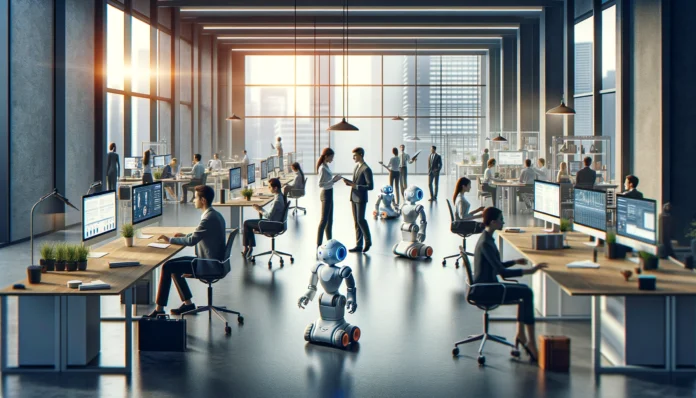In today’s fast-paced world, businesses are constantly seeking ways to optimize their workflows to stay competitive and meet evolving consumer demands. One avenue that has garnered increasing attention is the integration of robots into traditional human-centric workflows. This collaboration between humans and robots holds immense potential to revolutionize industries across the board, from manufacturing and logistics to healthcare and customer service. In this article, we delve into the intricacies of human-robot partnerships, exploring how they are reshaping modern workflows and driving innovation.
Robots have long been synonymous with automation, often associated with replacing human labor. However, the narrative is shifting towards a more collaborative approach, where robots complement human capabilities rather than supplanting them. This paradigm shift is evident in the concept of cobots, or collaborative robots, designed to work alongside humans in shared workspaces. By leveraging the strengths of both humans and robots, businesses can achieve unprecedented levels of efficiency, productivity, and flexibility.
One of the key advantages of human-robot partnerships is the ability to automate repetitive and mundane tasks, freeing up human workers to focus on more complex and creative endeavors. For instance, in manufacturing plants, robots can handle repetitive assembly tasks with precision and consistency, while human workers oversee quality control and process optimization. This division of labor allows businesses to streamline their operations and achieve higher output without sacrificing quality.
Moreover, robots excel in environments that are hazardous or unpleasant for humans, such as working in extreme temperatures, handling toxic substances, or navigating dangerous terrain. By deploying robots in such environments, businesses can minimize the risk of accidents and ensure the safety and well-being of their workforce. In the field of disaster response, robots equipped with sensors and cameras can be deployed to assess the damage in hazardous areas before human rescuers arrive, potentially saving lives in critical situations.
In addition to enhancing efficiency and safety, human-robot partnerships also hold the promise of unlocking new levels of innovation and creativity. By combining human ingenuity with robotic precision and scalability, businesses can tackle complex challenges and explore new frontiers. For example, in the field of design and engineering, architects and engineers are increasingly using robotic fabrication techniques to create intricate structures and prototypes that were previously impossible to achieve with traditional methods alone.
Furthermore, human-robot partnerships have the potential to revolutionize customer service and personalized experiences. Chatbots powered by artificial intelligence can interact with customers in real-time, providing instant support and assistance round-the-clock. These virtual assistants can handle routine inquiries, process orders, and even anticipate customer needs based on past interactions, freeing up human agents to focus on more complex inquiries and building deeper relationships with customers.
Despite the numerous benefits of human-robot partnerships, there are also challenges and considerations that businesses must address. One of the primary concerns is the potential impact on employment, as automation has the potential to displace certain jobs or require reskilling for workers to adapt to new roles. However, proponents argue that automation can also create new opportunities and lead to the creation of higher-skilled jobs in areas such as robot maintenance, programming, and supervision.
Another consideration is the ethical and societal implications of widespread adoption of robotics and AI. Questions around data privacy, algorithmic bias, and the ethical use of autonomous systems require careful consideration and regulatory oversight to ensure that human-robot partnerships are deployed responsibly and ethically. Additionally, there is a need for greater transparency and accountability in the design and deployment of AI systems to mitigate potential risks and ensure trust and acceptance among users and stakeholders.
In conclusion, the era of human-robot partnerships heralds a new era of innovation and transformation across industries. By harnessing the power of collaboration between humans and robots, businesses can unlock new levels of efficiency, safety, and creativity, driving growth and competitiveness in a rapidly evolving marketplace. However, to realize the full potential of human-robot partnerships, businesses must navigate the challenges and considerations with foresight and responsibility, ensuring that automation is deployed in a way that benefits society as a whole.





